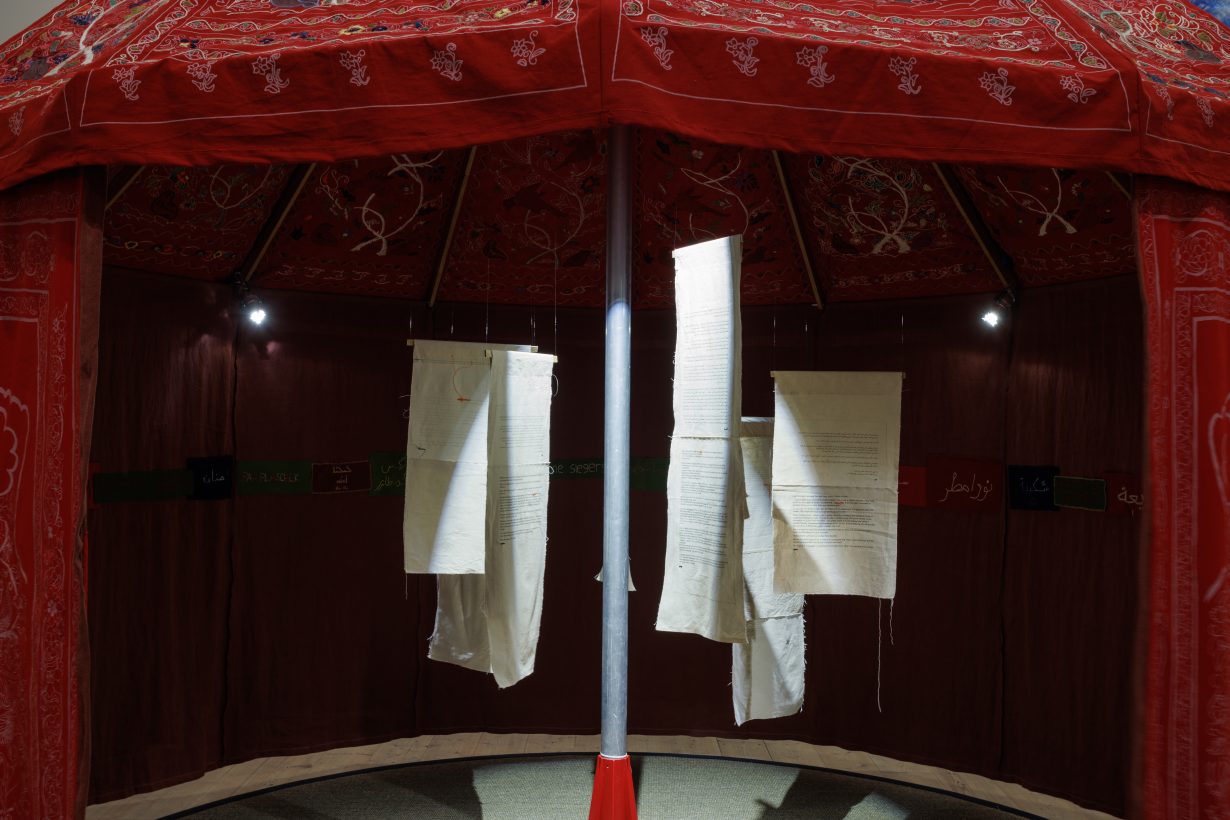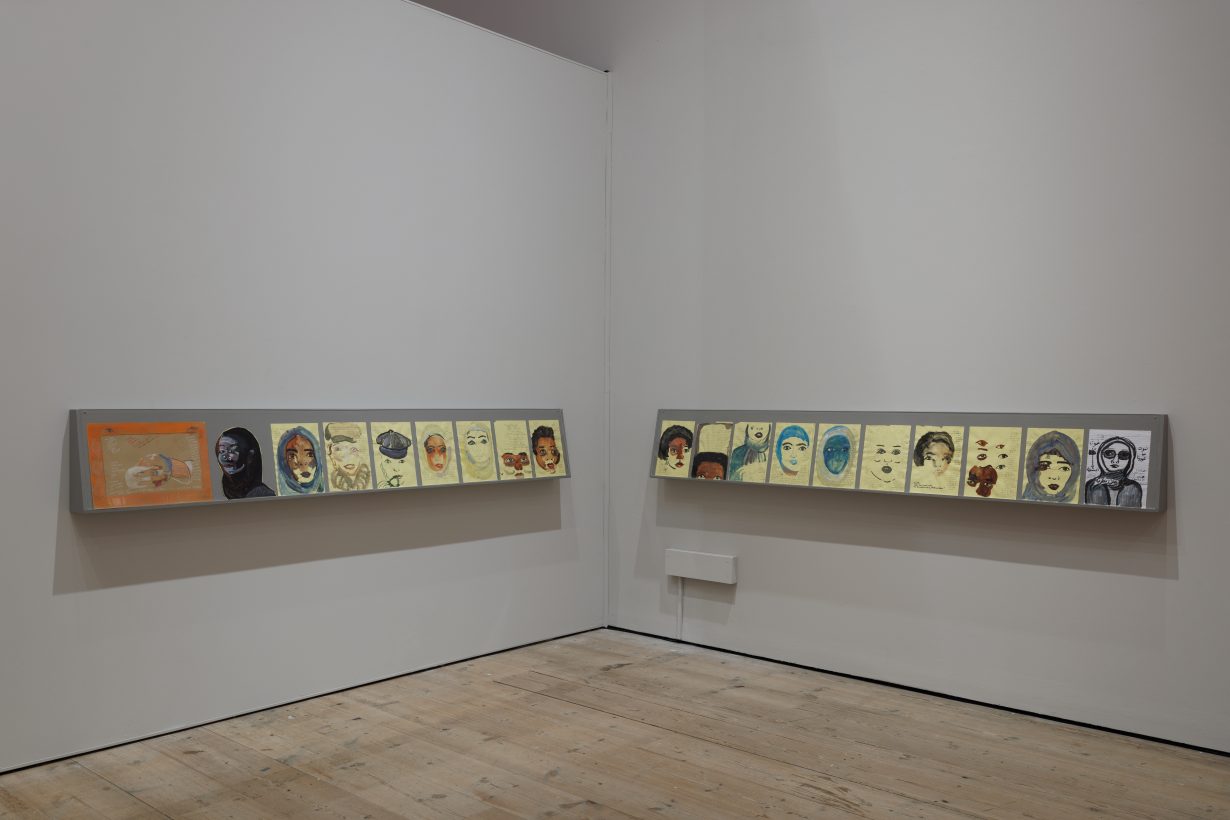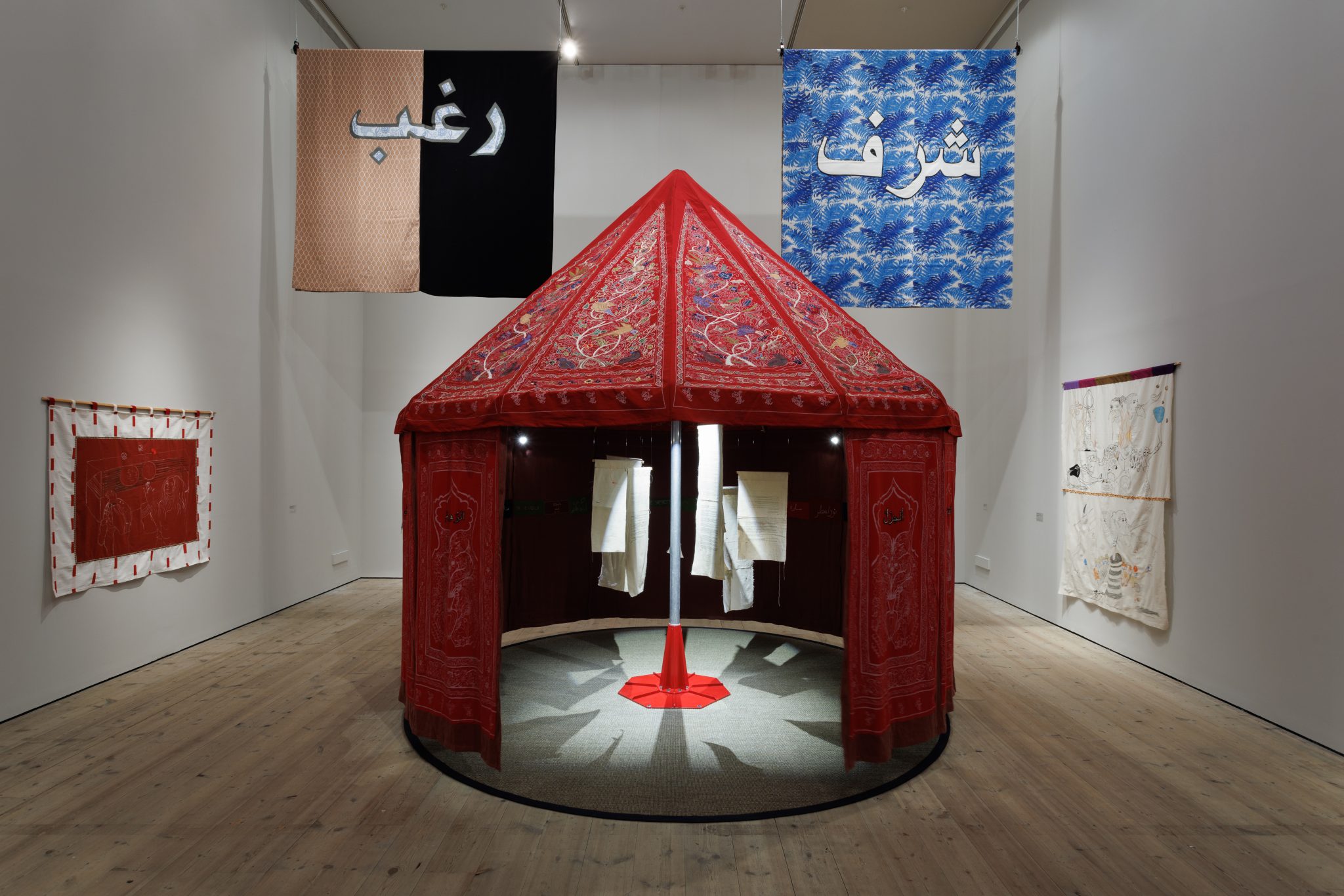A day is as long as a year at Baltic Centre for Contemporary Art speaks to a solidarity of suffering as much as it does to a solidarity of women
At the centre of Lebanese-born, Netherlands-based Mounira Al Solh’s exhibition is a circular, embroidered red tent (a new work from which the exhibition as a whole takes its title). It is of the type that one can imagine speaks to a nomadic tradition. And while the exterior is ‘decorative’, featuring relatively elaborate floral patterns and depictions of birds, there are other types of memories of other types of nomadism preserved within. The tent’s form and decor is based on an Iranian Qajar-era tent (created for Muhammad Shah during the mid-nineteenth century) in the collection of the Cleveland Museum in Ohio. This one is embroidered in collaboration with 31 women from Afghanistan, Iran, Lebanon, Turkey, the Netherlands and South Africa. You might see it as an act of repossession. Or restitution. Or reanimation. Although it’s not. A clue comes in the form of the Arabic words articulating notions of the sadness and happiness of female contributors on the interior of those decorated panels. And since we’re on the subject of language (which is important in Al Solh’s work), one might begin to think too about the fact that the word chador, used to describe the cloak worn by many women in Iran and other Persianate countries, derives from the classical Persian word for ‘tent’. What’s pretty on the outside is more complex once you go inside.
From the central tentpole itself hang printed stories (in Arabic and English, with keywords embroidered in red) of migrant lives. Like leaves on the branches of a tree. These highly personal narratives (also present in audio form) include stories of lost cats, the loss of mentally-challenged brothers, the perils of long-distance relationships, lives lived under patriarchal power systems, the problems of providing care across continents and of living with bombing and conflict, and cycles of violence that seem destined to persist. And at its heart is an exploration of what is possible when you have agency and what is impossible when you do not.

In some ways this work speaks to a solidarity of suffering as much as it does to a solidarity of women. (‘Maybe suffering is the key to growth’, concludes one of the texts on display.) And, at times, of how that suffering can be overcome. As you circle the tentpole, the stories appear to circulate with you. If that sense of solidarity comes in part because these women’s stories are literally woven together, then a series of painted portraits from the ongoing series I strongly believe in our right to be frivolous (2012–) returns us to individual experiences. While still suggesting what they have in common.
The portraits relate to the artist’s conversations with women who have been displaced by conflicts in the Middle East and Syria (Al Solh’s parents are Lebanese and Syrian) and are now facing the transition from refugee to citizen in their new homes. The images, the equivalent of painted snapshots (sometimes with the face and text obscured), are executed on yellow ruled-paper from a legal pad (which, assuming you get the reference, adds to the sense of these portraits being ‘snatched’, while also referencing the bureaucracy within which the subjects of the paintings are ensnared). As with A day is as long as a year, there’s an extent to which you need to follow the threads, or read between the lines, or, perhaps most accurately of all, translate what you see. Although on the other hand the whole project could be boiled down (as the artist has when discussing it previously) to the following cliché: every face tells a story. Although it certainly helps if you know how to read them (and Arabic).

The exhibition is completed by double-sided patchwork curtains (of the type used in Lebanon to shade houses from the sun) from another ongoing series, Sama’/Ma’as (2014–), which feature pairs of three-letter Arabic root words in which the letter order of one is shifted to generate a new word to form pairs such as ‘Desire/Dust’ or ‘Shovel/Dignity’. While they articulate a form of play with the slipperiness of language and meaning, they also suggest the enduring migrant conundrum of being a part of something and apart from something – the same but different. Collectively the works on show here articulate a powerful sense of what makes communities, and of the forces that break them apart.
A day is as long as a year at Baltic Centre for Contemporary Art, Gateshead, through 2 October
